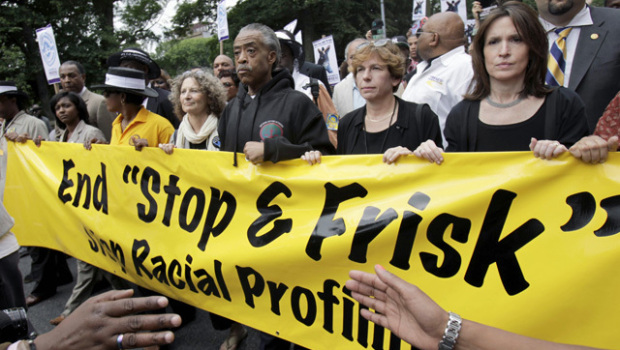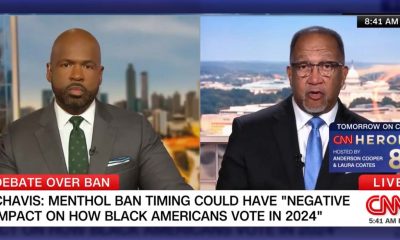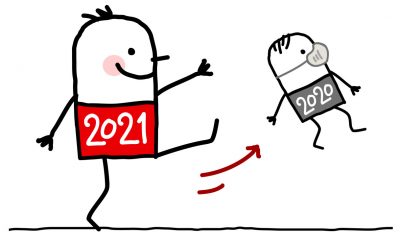National
New York’s ‘Stop-and-Frisk’ Policy Declared Unconstitutional

By Freddie Allen
NNPA Washington Correspondent
WASHINGTON (NNPA) – The stop-and-frisk policy practiced by the New York City police department was little more than “indirect racial profiling,” according to a federal judge who ruled that police routinely violated the 4th and 14th amendment rights of Blacks and Latinos.
Mayor Michael Bloomberg scoffed at the ruling, saying, “This is a very dangerous decision made by a judge who I think does not understand how policing works.”
The New York Civil Liberties Union analyzed how policing works in the nation’s largest police department and found that “NYPD stopped and interrogated people 532,911 times, a 448-percent increase in street stops since 2002 – when police recorded 97,296 stops during Mayor Bloomberg’s first year in office.”
The NYCLU report, titled “Stop and Frisk 2012,” also found that 90 percent of the people who were stopped were innocent and roughly 55 percent were Black. NYPD stopped and interrogated Whites less than 10 percent of the time.
Even in some New York City neighborhoods with low minority populations, Blacks and Latinos still made up 70 percent of the stops.
“The NYPD defends its abusive stop-and-frisk program as the reason why New York City’s streets are safe. But last year stops went down 22 percent and homicide was at an all time low,” said NYCLU Associate Legal Director Christopher Dunn in a statement following the release of the report. “This gives the lie to the NYPD’s repeated claims that more and more stops are needed to save lives.”
Opponents of New York City’s “stop-and-frisk” policy often cite the low number of stops that actually netted weapons. Police recovered weapons during 1.8 percent of the stops of Blacks and Latinos. When Whites were stopped a weapon was recovered 3.9 percent of the time.
Writing in her opinion, Judge Sheindlein noted this disparity. “Once a stop is made, blacks and Hispanics are more likely to be subjected to the use of force than whites, despite the fact that whites are more likely to be found with weapons or contraband,” she wrote.
Many civil rights groups argue that Mayor Bloomberg’s stop-and-frisk policy is wasteful, given the police department’s own data and the harm that it causes in minority communities who often have a distant and suspicious relationship with law enforcement.
“Basically, what Bloomberg is saying is that it doesn’t matter that a 13-year-old is being handcuffed and taken to the precinct when he is on his way home, it doesn’t matter that somebody who is walking across the street after taking care of his mom is pushed against the wall and profiled,” said Kimberlé Crenshaw, law professor at the University of California at Los Angeles and co-founder of the African American Policy Foundation, a nonprofit organization that advances racial justice, gender equality, and human rights. “What matters is that very small percentage that we think might have been deterred from doing crime has been deterred.”
Barbara Arnwine, executive director of the Lawyers’ Committee for Civil Rights Under Law, said that the decision in New York City might lead to federal lawsuits in other major metropolitan areas where police employ stop-and-frisk tactics.
In New Orleans, utilizing curfew laws, police disproportionately funneled young Blacks into the criminal justice system. In 2011, for example, 704 Black youth were detained. Only 47 White teens were arrested during the same period.
In Philadelphia, the American Civil Liberties Union found that in 2011, police did not have reasonable suspicion during 47 percent of frisks that occurred. Eighty-five percent of the frisks conducted that year were of minorities.
And in Baltimore, the NAACP took the police department to court to gain access to records that will enable them to investigate complaints of racial profiling.
“The implication is that any department that has a ‘stop-and-frisk’ policy out there is that they better make sure that they are not racially profiling African Americans, Latinos, Native Americans or any other protected group,” said Arnwine. “The over criminalization and the mass incarceration of African Americans and Latinos has gotten out of hand, it has gone too far.”
Arnwine continued: “People are tired of it and people are going to demand sound law enforcement principles and not just these racially targeting principles.”
Although Judge Scheindlin, didn’t move to outlaw stop-and-frisk in New York City completely, she required a number of improvements, including: “an immediate change to certain policies and activities of the NYPD, a trial program requiring the use of body-worn cameras in one precinct per borough, a community-based joint remedial process to be conducted by a court-appointed facilitator, and the appointment of an independent monitor to ensure that the NYPD’s conduct of stops and frisks.”
Judge Sheindlein quoted a New York Times article titled “The Whole System Failed Trayvon Martin” by Charles Blow to describe the victimization of Blacks and Latinos at the hands of New York City police that practice ‘stop-and-frisk’ tactics.
“The idea of universal suspicion without individual evidence is what Americans find abhorrent and what black men in America must constantly fight,” wrote Blow. “It is pervasive in policing policies — like stop-and-frisk, and in this case neighborhood watch — regardless of the collateral damage done to the majority of innocents.”
Blow continued: “It’s like burning down a house to rid it of mice.”
###













































